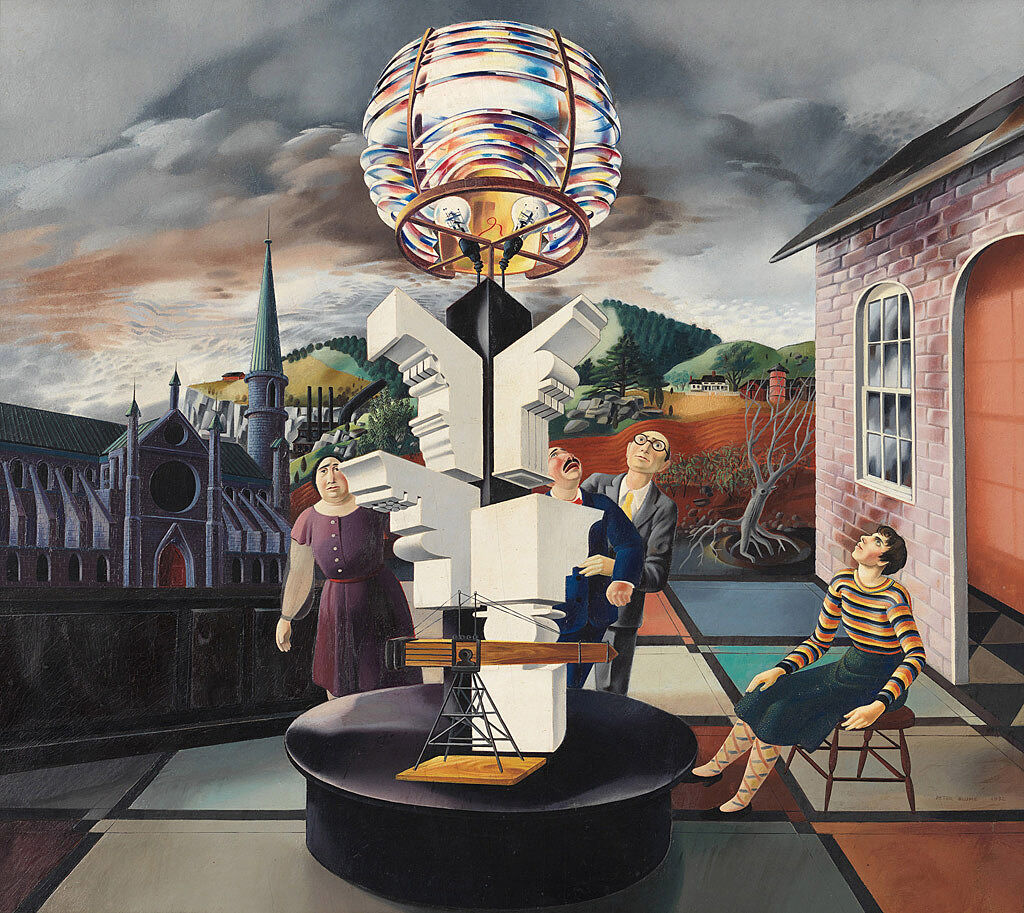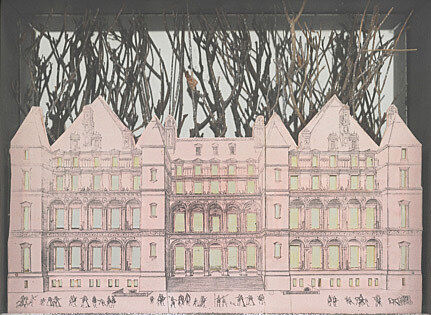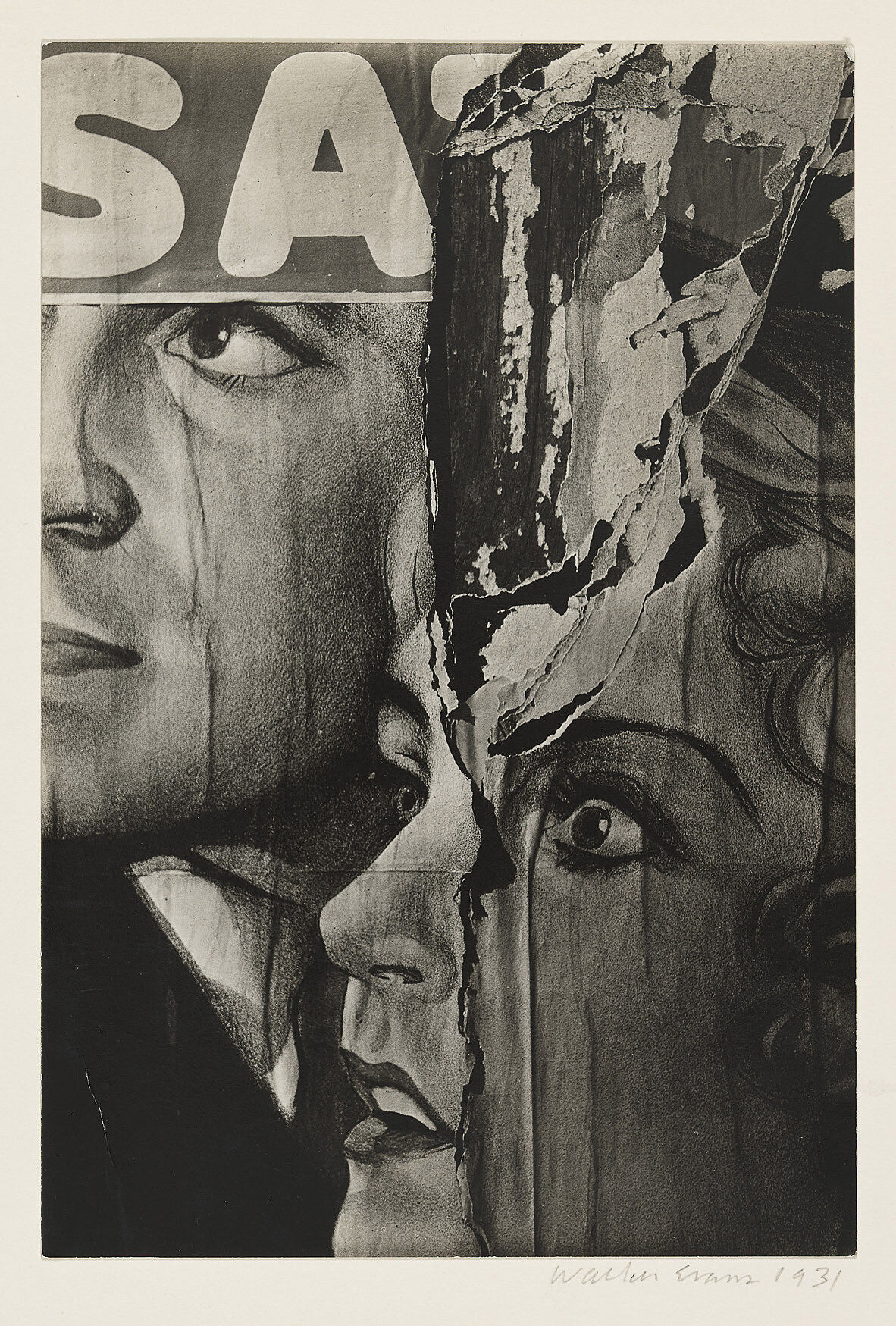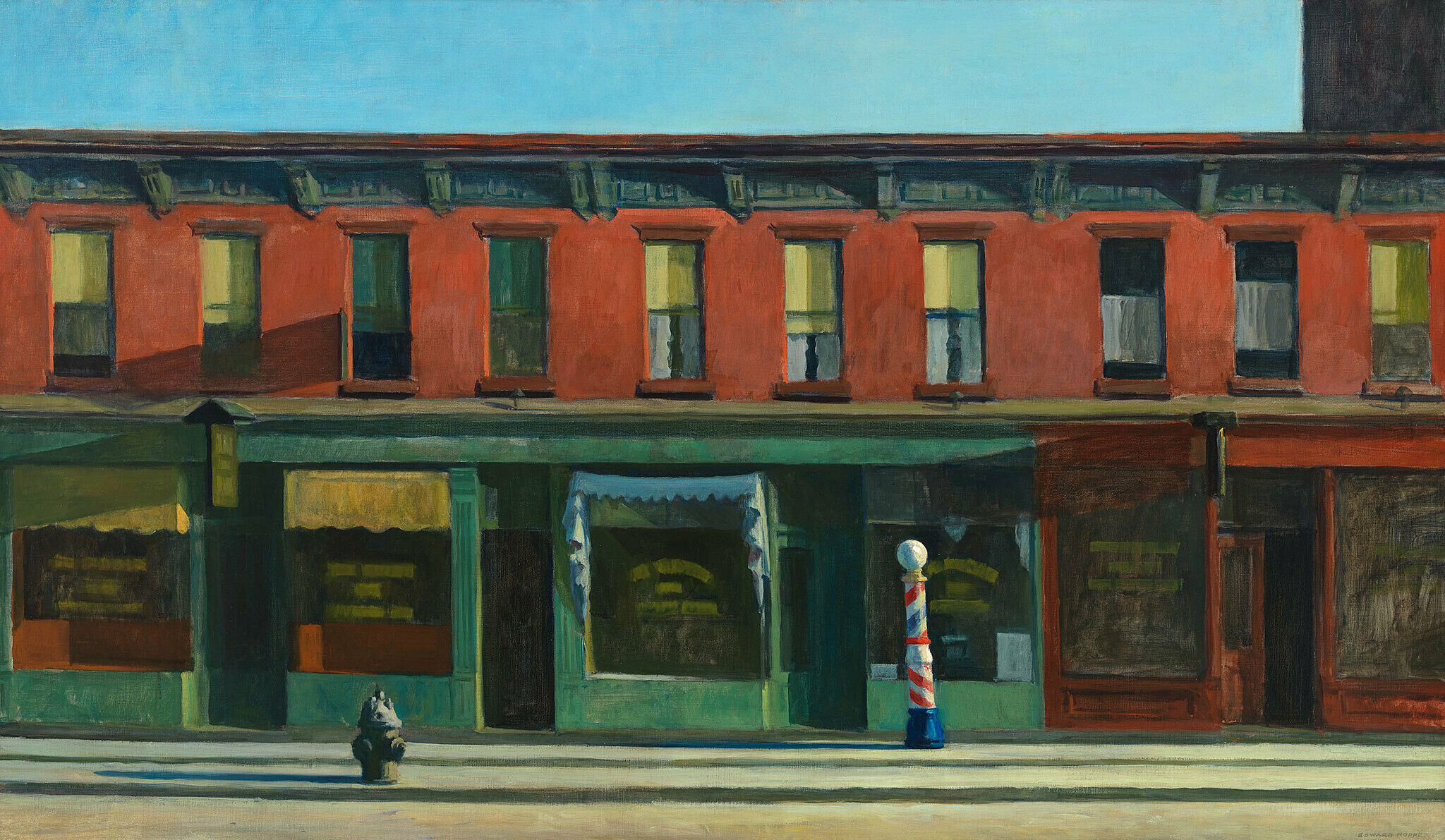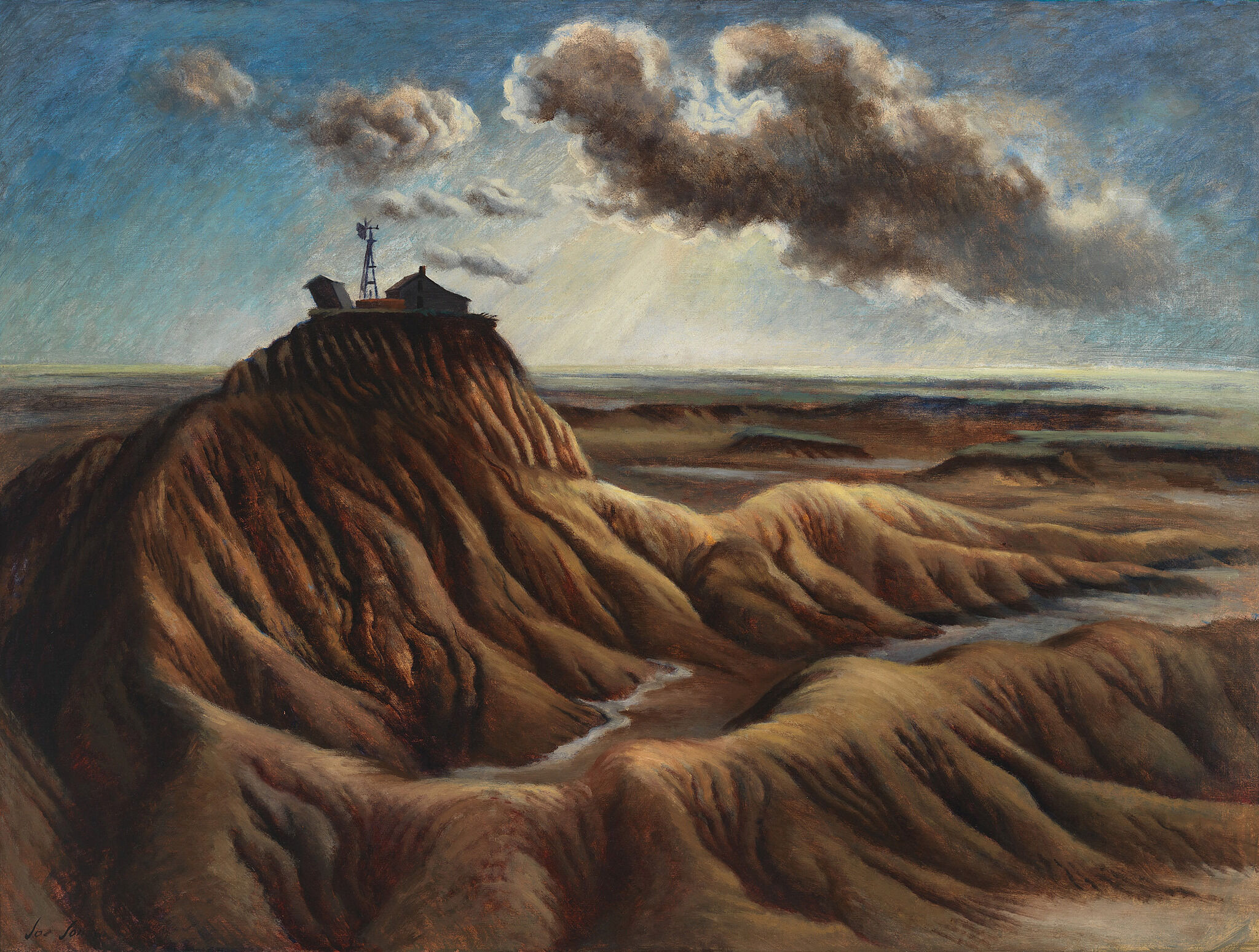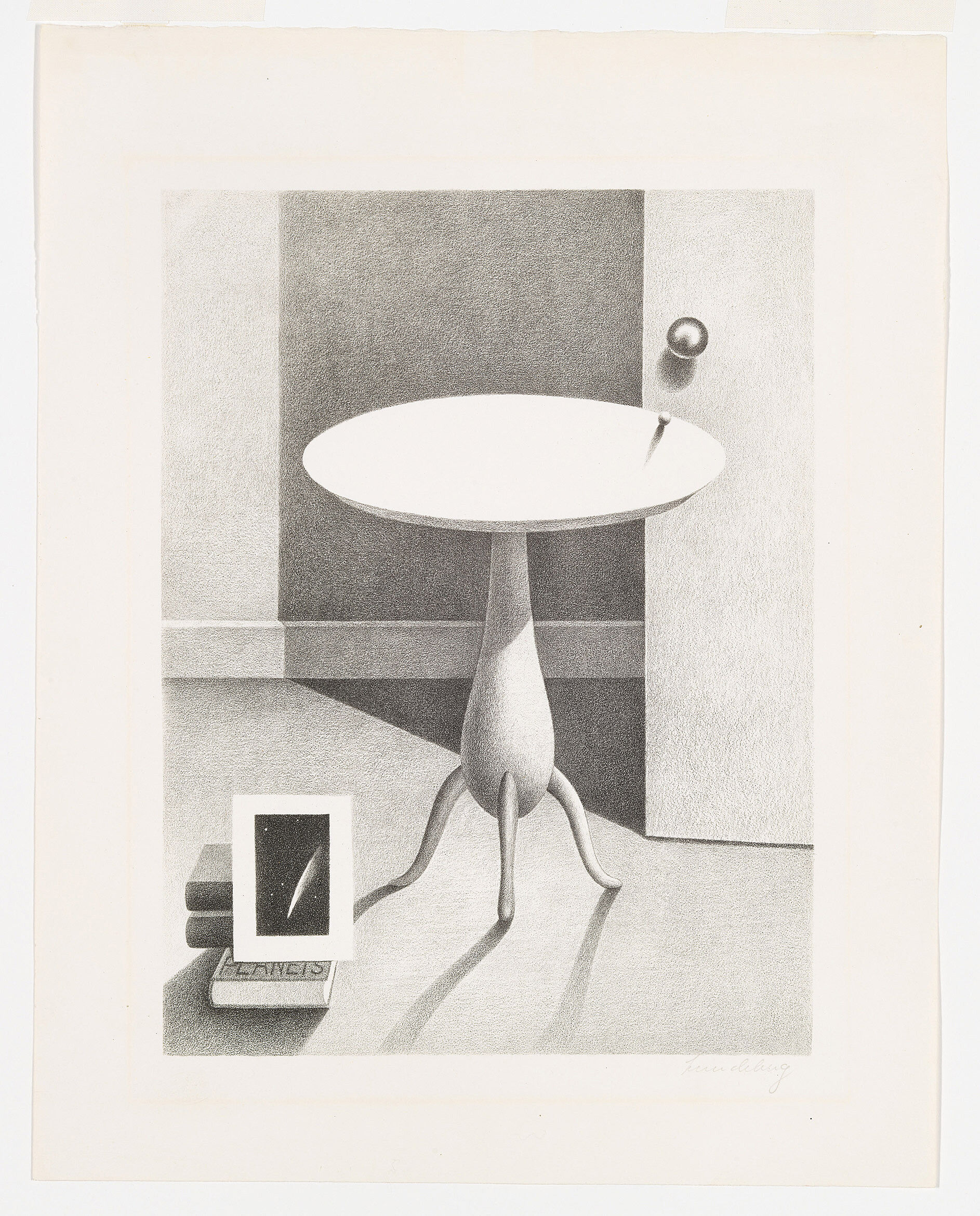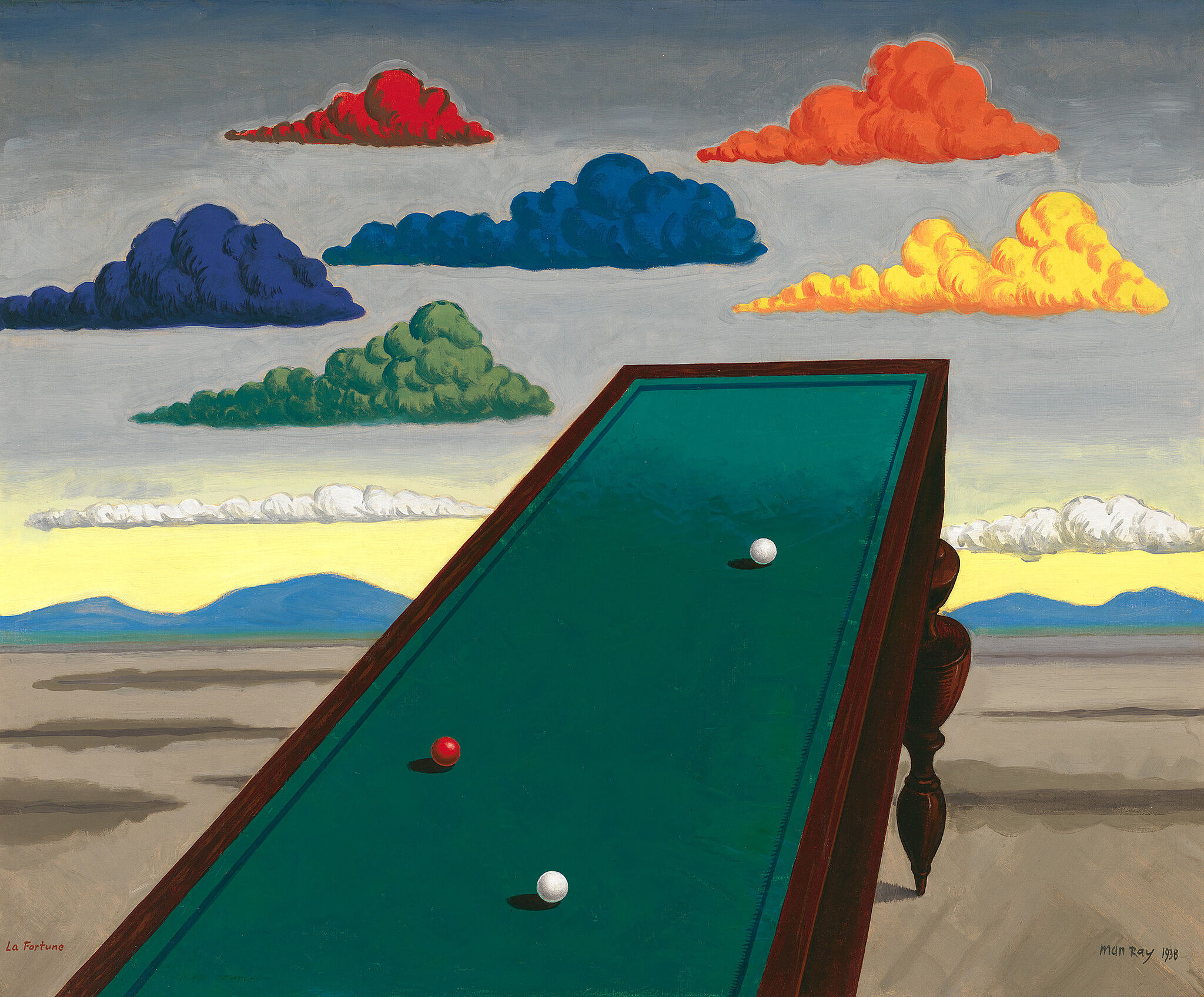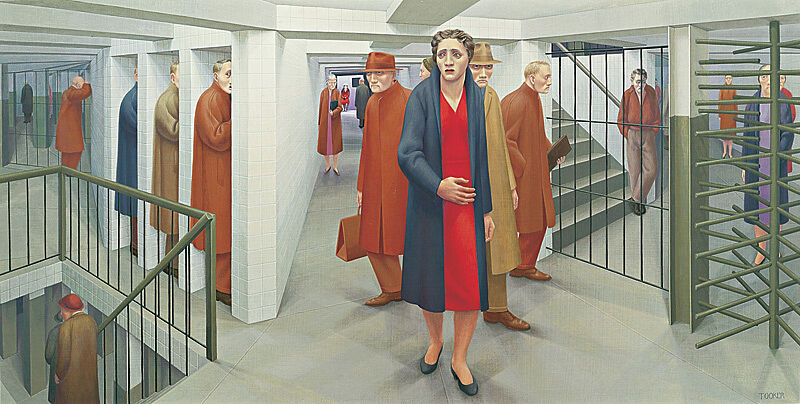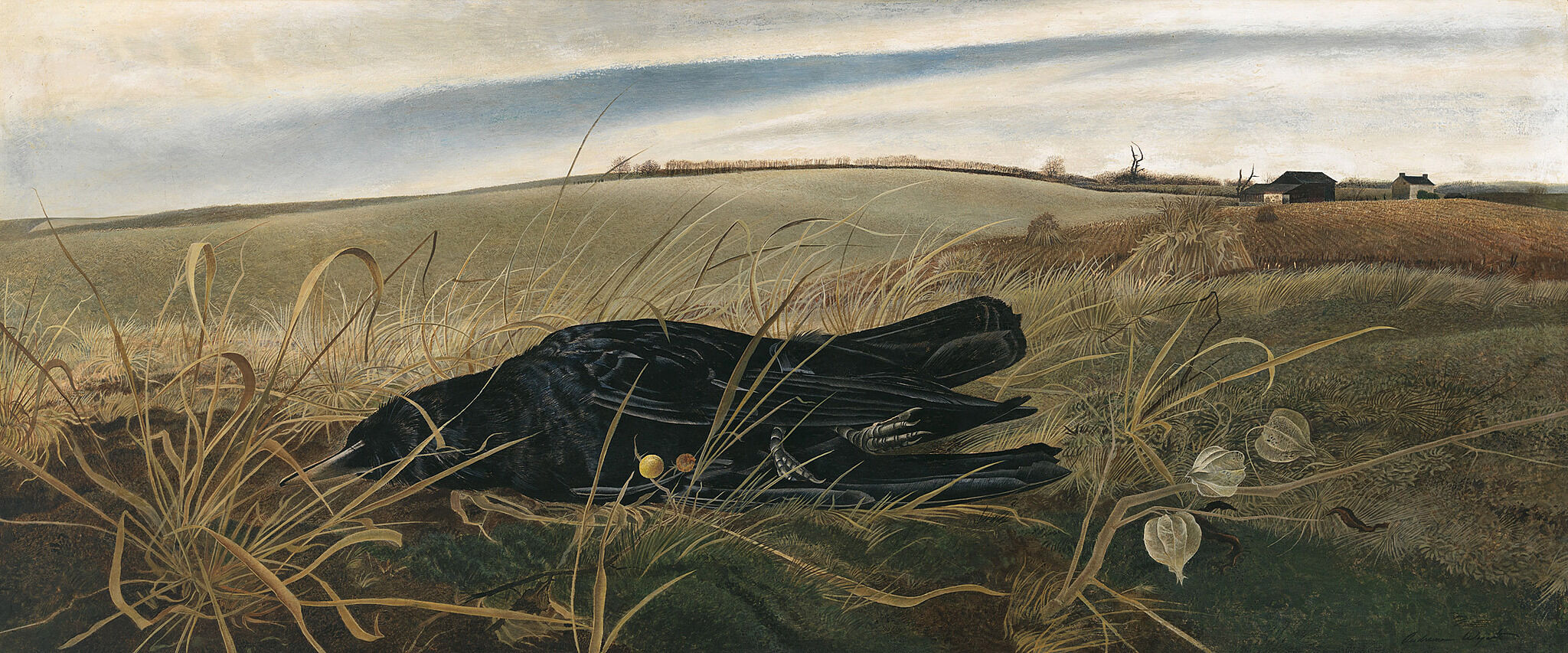America Is Hard to See | Art & Artists
May 1–Sept 27, 2015
America Is Hard to See | Art & Artists
Rose Castle
8
In the 1930s and 1940s, many American artists explored the interconnections between the real and the imagined, making the familiar unsettling and strange. They were particularly influenced by Surrealism, a literary and artistic movement that originated in Paris in the 1920s, whose practitioners tapped into the subconscious to create dreamlike narratives and scenes. American artists especially favored the work of Salvador Dalí and René Magritte, Europeans with strong ties to the tradition of figurative painting.
The term “realism” has many connotations but broadly refers to believable depictions of the observable world. Most of the artists represented here were academically trained and therefore had full command of traditional techniques. Peter Blume and Louis Guglielmi, for example, used the tools of illusionistic representation to conjure fantastic realms. Others, including Edward Hopper, more subtly tweaked the conventions of realism, turning the everyday into something psychologically charged and even sinister. Between these poles, Magic Realist artists Jared French and George Tooker precisely rendered situations that at first glance appear ordinary but ultimately prove unfamiliar and often disturbing. Others, such as Man Ray and Joseph Cornell, used collage and found images and objects to create intricate tableaux, like Cornell’s Rose Castle, directly drawn from our world and yet removed from it.
Below is a selection of works from this chapter.
Artists
- Berenice Abbott
- Michele Abeles
- Vito Acconci
- Ansel Adams
- Robert Adams
- Carl Andre
- Kenneth Anger
- Eleanor Antin
- Diane Arbus
- Cory Arcangel
- David Armstrong
- Richard Artschwager
- Ruth Asawa
- Asco
- Charles Atlas
- Lutz Bacher
- Peggy Bacon
- Jo Baer
- Alex Bag
- Malcolm Bailey
- Lamar Baker
- John Baldessari
- Alvin Baltrop
- Lewis Baltz
- Matthew Barney
- Richmond Barthé
- Jean-Michel Basquiat
- Romare Bearden
- Cecil Beaton
- Robert Beavers
- Robert Bechtle
- Ericka Beckman
- Larry Bell
- George Bellows
- Lynda Benglis
- Thomas Hart Benton
- Wallace Berman
- Bernadette Corporation
- Judith Bernstein
- Huma Bhabha
- David Bienstock
- Henry Billings
- Ilse Bing
- Dara Birnbaum
- Nayland Blake
- Oscar Bluemner
- Peter Blume
- Lee Bontecou
- Jonathan Borofsky
- Louise Bourgeois
- Margaret Bourke-White
- Carol Bove
- Mark Bradford
- Stan Brakhage
- Robert Breer
- Patrick Henry Bruce
- Bernarda Bryson Shahn
- Charles Burchfield
- Jacob Burck
- Chris Burden
- Scott Burton
- Mary Ellen Bute
- Paul Cadmus
- John Cage
- Alexander Calder
- Cameron
- Luis Camnitzer
- Peter Campus
- James Castle
- Elizabeth Catlett
- Maurizio Cattelan
- Vija Celmins
- John Chamberlain
- Paul Chan
- Sarah Charlesworth
- Ayoka Chenzira
- Chryssa
- Larry Clark
- Chuck Close
- Sue Coe
- Anne Collier
- Bruce Conner
- Joseph Cornell
- Eldzier Cortor
- Miguel Covarrubias
- John Covert
- Ralston Crawford
- E.E. Cummings
- Imogen Cunningham
- John Currin
- John Steuart Curry
- Allan D'Arcangelo
- James Daugherty
- Emma Lu Davis
- Stuart Davis
- Roy DeCarava
- Jay DeFeo
- Willem de Kooning
- Walter De Maria
- Charles Demuth
- Maya Deren
- Jim Dine
- Mark di Suvero
- Arthur Dove
- Thomas Downing
- Elsie Driggs
- Guy Pène Du Bois
- Carroll Dunham
- Sam Durant
- Jimmie Durham
- Mabel Dwight
- William Eggleston
- Nicole Eisenman
- Wharton Esherick
- Walker Evans
- Kevin Jerome Everson
- Loretta Fahrenholz
- Andreas Feininger
- Lyonel Feininger
- Duncan Ferguson
- Rafael Ferrer
- Paul Fiene
- Morgan Fisher
- John B. Flannagan
- Hollis Frampton
- Robert Frank
- Andrea Fraser
- LaToya Ruby Frazier
- Hermine Freed
- Jared French
- Lee Friedlander
- Brian Frye
- Charles Gaines
- Anna Gaskell
- GCC
- Gerald K. Geerlings
- Hugo Gellert
- Sandra Gibson
- Luis Gispert
- William Glackens
- Milton Glaser
- Robert Gober
- Nan Goldin
- Wayne Gonzales
- Felix Gonzalez-Torres
- Boris Gorelick
- Arshile Gorky
- Dan Graham
- William Gropper
- Nancy Grossman
- George Grosz
- Louis Guglielmi
- Philip Guston
- Walter Gutman
- Wade Guyton
- Hans Haacke
- Peter Halley
- David Hammons
- Keith Haring
- Rachel Harrison
- Marsden Hartley
- David Hartt
- David Haxton
- Sharon Hayes
- Al Held
- Robert Henri
- Carmen Herrera
- Eva Hesse
- Lewis Hine
- Nancy Holt
- Jenny Holzer
- Edward Hopper
- Roni Horn
- Earl Horter
- Alex Hubbard
- Peter Hujar
- Victoria Hutson Huntley
- Richard Hunt
- Robert Indiana
- Abraham Jacobs
- Ulysses Jenkins
- Neil Jenney
- Candy Jernigan
- Jess
- Jasper Johns
- Rashid Johnson
- Ray Johnson
- William H. Johnson
- Joan Jonas
- Joe Jones
- Philip Mallory Jones
- Michael Joo
- Donald Judd
- Alex Katz
- On Kawara
- Mike Kelley
- Ellsworth Kelly
- Sister Corita Kent
- Rockwell Kent
- Karen Kilimnik
- William Klein
- Franz Kline
- Josh Kline
- Jeff Koons
- Lee Krasner
- Barbara Kruger
- Yasuo Kuniyoshi
- Yayoi Kusama
- Suzanne Lacy
- David Lamelas
- Dorothea Lange
- Liz Magic Laser
- Robert Laurent
- Louise Lawler
- Jacob Lawrence
- An-My Lê
- William Leavitt
- Zoe Leonard
- Alfred Leslie
- Howard Lester
- Sherrie Levine
- Herschel Levit
- Helen Levitt
- Sol LeWitt
- Roy Lichtenstein
- Glenn Ligon
- Kalup Linzy
- Alvin Loving
- Lee Lozano
- Louis Lozowick
- George Luks
- Helen Lundeberg
- Len Lye
- Danny Lyon
- Stanton Macdonald-Wright
- Tala Madani
- Sylvia Plimack Mangold
- Man Ray
- Robert Mapplethorpe
- Christian Marclay
- Brice Marden
- Marisol
- Kyra Markham
- Reginald Marsh
- Agnes Martin
- Fletcher Martin
- Gordon Matta-Clark
- Cynthia Maughan
- Keith Mayerson
- Paul McCarthy
- John McCracken
- Adam McEwen
- John McLaughlin
- Josephine Meckseper
- Jonas Mekas
- Ana Mendieta
- Sam Middleton
- Aleksandra Mir
- Joan Mitchell
- Toyo Miyatake
- Lisette Model
- Donald Moffett
- Abelardo Morell
- Robert Morris
- Mark Morrisroe
- Gerald Murphy
- Elizabeth Murray
- Julie Murray
- Reuben Nakian
- Bruce Nauman
- Alice Neel
- Louise Nevelson
- Barnett Newman
- Isamu Noguchi
- David Novros
- Jim Nutt
- Chiura Obata
- Georgia O'Keeffe
- Claes Oldenburg
- Catherine Opie
- José Clemente Orozco
- Raphael Montañez Ortiz
- Alfonso Ossorio
- Tony Oursler
- Bill Owens
- Akosua Adoma Owusu
- Nam June Paik
- Gordon Parks
- Agnes Pelton
- I. Rice Pereira
- Raymond Pettibon
- Elizabeth Peyton
- Paul Pfeiffer
- Howardena Pindell
- Adrian Piper
- Horace Pippin
- Lari Pittman
- Jackson Pollock
- Liliana Porter
- Richard Pousette-Dart
- Richard Prince
- Nancy Elizabeth Prophet
- Noah Purifoy
- R. H. Quaytman
- Walid Raad
- Yvonne Rainer
- Christina Ramberg
- Robert Rauschenberg
- Charles Ray
- Luis Recoder
- Jeffrey Reed
- Robert Reed
- Earl Reiback
- Ad Reinhardt
- Hans Richter
- Faith Ringgold
- Dorothea Rockburne
- James Rosenquist
- Martha Rosler
- Theodore Roszak
- Susan Rothenberg
- Mark Rothko
- Edward Ruscha
- Morgan Russell
- Betye Saar
- David Salle
- Lucas Samaras
- Jacolby Satterwhite
- Peter Saul
- Matt Saunders
- Morton Schamberg
- Carolee Schneemann
- Dana Schutz
- Dread Scott
- George Segal
- Richard Serra
- Ben Shahn
- Joel Shapiro
- Paul Sharits
- Charles Sheeler
- Cindy Sherman
- Roger Shimomura
- Everett Shinn
- Amy Sillman
- Laurie Simmons
- Taryn Simon
- Lorna Simpson
- John Sloan
- David Smith
- Jack Smith
- Kiki Smith
- Robert Smithson
- Tony Smith
- Keith Sonnier
- Edward Steichen
- Ralph Steiner
- Frank Stella
- Joseph Stella
- Harry Sternberg
- Hedda Sterne
- Florine Stettheimer
- May Stevens
- Alfred Stieglitz
- John Storrs
- Michelle Stuart
- Sturtevant
- Wayne Thiebaud
- Alma Thomas
- Rirkrit Tiravanija
- George Tooker
- Bill Traylor
- Ryan Trecartin
- Trisha Brown Dance Company
- Anne Truitt
- Wu Tsang
- Richard Tuttle
- Cy Twombly
- Stan VanDerBeek
- Kara Walker
- Kelley Walker
- Carl Walters
- Andy Warhol
- Max Weber
- Weegee
- William Wegman
- Lawrence Weiner
- Tom Wesselmann
- H.C. Westermann
- Charles White
- Gertrude Vanderbilt Whitney
- Jack Whitten
- Hannah Wilke
- Christopher Williams
- Sue Williams
- Fred Wilson
- Garry Winogrand
- William Winter
- Karl Wirsum
- David Wojnarowicz
- Jordan Wolfson
- Martin Wong
- Grant Wood
- Francesca Woodman
- Hale Aspacio Woodruff
- Christopher Wool
- Andrew Wyeth
- William Zorach

